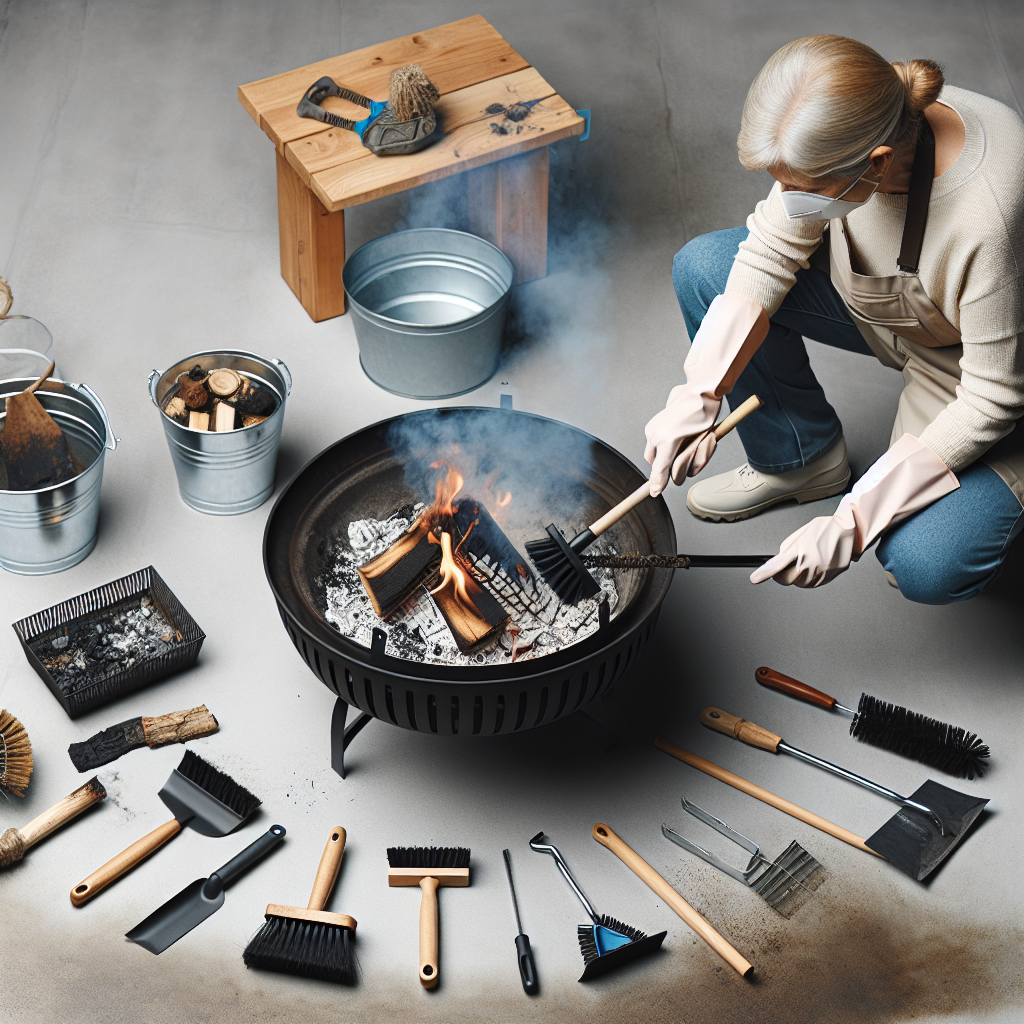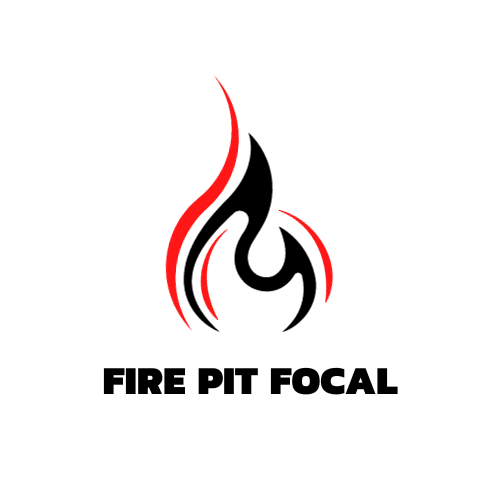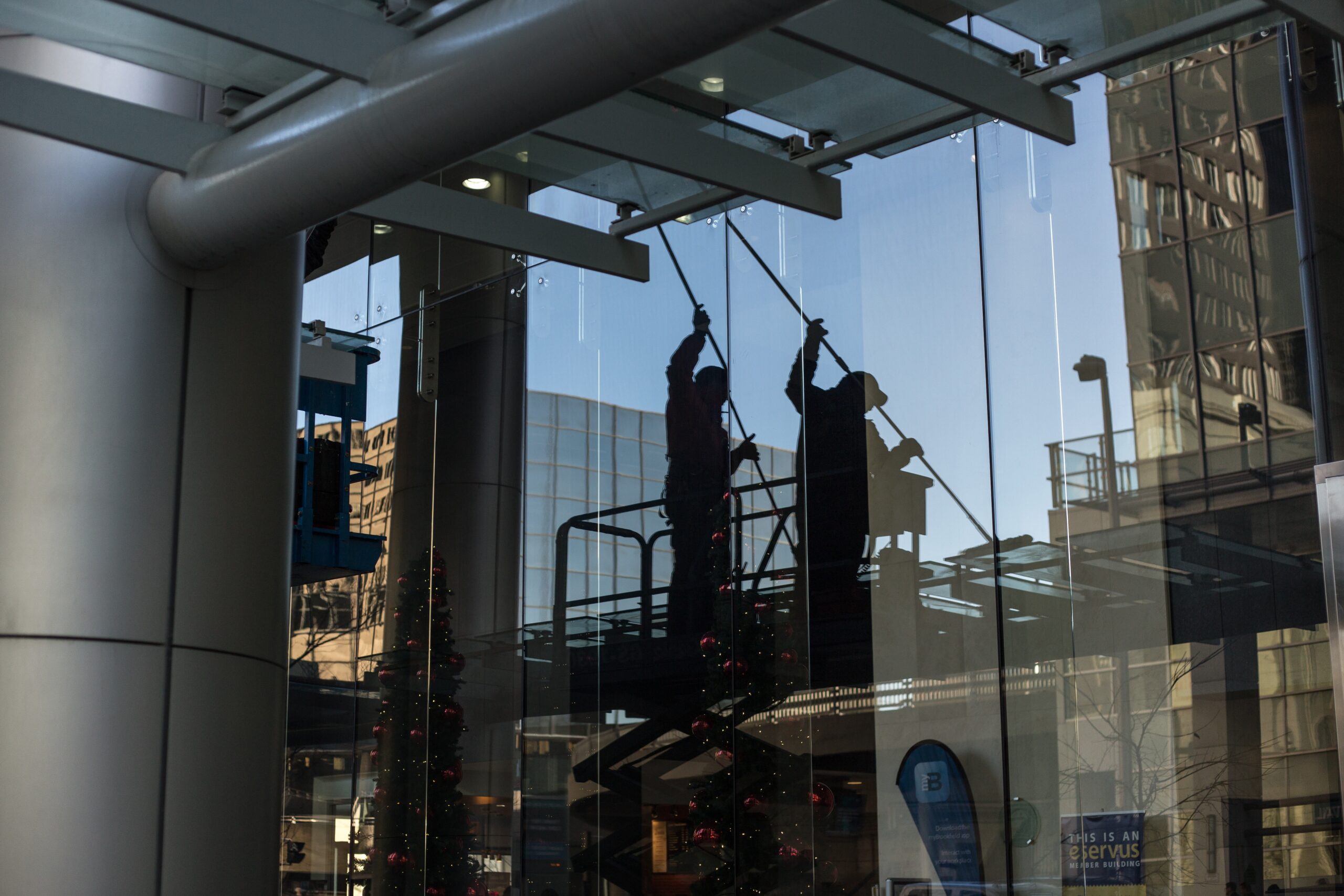Are you an avid fan of cozy bonfires in your backyard? If so, you might often find yourself faced with the challenge of dealing with the aftermath of ash and soot from your wood-burning fire pit. Whether you’re a seasoned fire pit user or just starting out, it’s important to know the best ways to handle and dispose of the residues left behind. In this article, we will explore some practical tips and tricks to help you effectively manage ash and soot, ensuring that your fire pit experience remains enjoyable and hassle-free.

Regular Cleaning Methods
When it comes to maintaining a wood-burning fire pit, regular cleaning is essential to keep it looking and functioning its best. Here are some tried-and-true methods for keeping your fire pit clean.
Sweeping
One of the simplest and most effective ways to clean your fire pit is by sweeping it regularly. By using a broom or brush specially designed for outdoor use, you can easily remove ash, debris, and soot that may accumulate in the fire pit. Start by removing any large debris and then gently sweep the remaining ash and soot into a dustpan for easy disposal.
Using a Shop Vacuum
For a more thorough cleaning, consider using a shop vacuum to remove ash and soot from your fire pit. Be sure to use a vacuum with a filter specifically designed for fine particles, as ash and soot can be very fine and easily dispersed. Carefully vacuum the interior and exterior of your fire pit, paying special attention to hard-to-reach areas and the bottom of the pit.
Using a Leaf Blower
If you have a leaf blower handy, it can also be a great tool for cleaning your fire pit. Use the leaf blower on the lowest setting to gently blow away ash, soot, and debris from all surfaces of the fire pit. This method is particularly useful for reaching tight corners and crevices that may be difficult to clean with a broom or vacuum.
Cleaning with a Broom
In addition to sweeping, you can also use a broom to scrub the surface of your fire pit and remove any stubborn stains or buildup. Dip the broom into a mixture of warm water and mild detergent, then scrub the fire pit in circular motions. Rinse off the soap with clean water and let the fire pit dry thoroughly before using it again.
Using a Garden Hose
If your fire pit is particularly dirty or stained, you may need to use a garden hose to give it a deep cleaning. Start by removing any large debris, then spray the entire surface of the fire pit with water. Use a scrub brush or broom to agitate the water and remove stubborn stains. Rinse the fire pit thoroughly and allow it to dry completely before using it again.
Safety Measures
Before and during the cleaning process, it’s important to prioritize safety. Here are some key safety measures to keep in mind:
Wearing Protective Gear
Always wear protective gear, such as gloves and safety goggles, when cleaning your fire pit. This will help protect your hands and eyes from any potential hazards, such as hot ashes or chemicals.
Ensuring Proper Ventilation
When cleaning your fire pit, make sure you are working in a well-ventilated area. This will help minimize the inhalation of ash, soot, and any cleaning products you may be using. If possible, clean your fire pit outdoors or in a garage with the doors open.
Handling Ashes Safely
When disposing of ashes, it’s important to handle them with caution. Allow the ashes to cool completely before trying to clean or remove them from the fire pit. Use a metal ash bucket with a tight-fitting lid to store and transport the ashes. Never dispose of hot ashes in plastic or combustible containers, as they can cause a fire.
Disposal Options
Knowing how to properly dispose of ashes and soot is an important part of maintaining a clean fire pit. Here are some disposal options to consider:
Disposing of Ashes
Once the ashes have cooled completely, you can dispose of them in several ways. One option is to simply scatter the ashes in a designated area of your garden, as they can act as a natural fertilizer. Alternatively, you can bag the ashes in a sturdy container and place them in your regular trash bin. Be sure to check with your local waste management guidelines for any specific disposal instructions.
Soot Disposal
Soot, which is the fine black residue left behind after a fire, can be a bit trickier to dispose of. It’s best to collect the soot in a sturdy bag or container and dispose of it in your regular trash bin. Make sure the container is tightly sealed to avoid any accidental spills or messes.
Recycling Options
If you’re looking for a more eco-friendly option, consider recycling your ashes and soot. Some recycling centers accept ashes and soot for composting or other agricultural purposes. Check with your local recycling facility to see if they have any specific guidelines or programs in place for recycling these materials.
Preventing and Reducing Ash and Soot
While regular cleaning is important, preventing and reducing the amount of ash and soot produced in the first place can make your cleaning efforts easier. Here are some tips to help minimize ash and soot buildup:
Choosing the Right Wood
The type of wood you burn in your fire pit can greatly impact the amount of ash and soot produced. Avoid burning wood that is wet, green, or treated, as these types of wood tend to create more smoke and ash. Opt for dry, seasoned hardwoods like oak, maple, or birch, as they produce less ash and burn more efficiently.
Proper Firewood Storage
Storing your firewood correctly can also help reduce ash and soot. Make sure your firewood is stored in a dry, covered area to prevent it from absorbing moisture. Wet or damp firewood can create more smoke and ash when burned, so it’s best to let the wood dry out thoroughly before using it.
Using Dampers and Venting Systems
A properly functioning damper and venting system can help control the airflow in your fire pit, resulting in a more efficient burn and less ash and soot production. Make sure your damper is fully open when starting a fire and adjust it as needed to maintain a steady burn. Additionally, check the venting system regularly to ensure it is clear of any obstructions that could hinder proper airflow.
Regular Chimney Cleaning
If your fire pit is equipped with a chimney, regular cleaning and maintenance are crucial. Over time, creosote and soot can build up inside the chimney, increasing the risk of chimney fires and affecting the overall performance of the fire pit. Hiring a professional chimney sweep to clean and inspect your chimney annually is highly recommended.

Alternative Clean-up Methods
In addition to traditional cleaning methods, there are some alternative ways you can utilize ash and soot. Here are a few ideas:
Using Ash for Gardening
Ashes can be used as a natural fertilizer for your garden. They are rich in potassium and other essential nutrients that plants need to thrive. However, it’s important to use ash in moderation and avoid using it around acid-loving plants, as it can raise the pH level of the soil.
Composting Ashes
If you have a compost pile, you can add small amounts of ash to help balance the pH level. Ash can also help deter pests and odors in the compost pile. However, keep in mind that ash should be added sparingly, as too much can overwhelm the composting process.
Utilizing Ash for Cleaning
Ash can be used as a gentle abrasive for cleaning purposes. Sprinkle a small amount of ash onto a damp cloth or sponge and use it to scrub away stains and grime on outdoor surfaces, such as patio furniture or grill grates. Make sure to rinse thoroughly afterwards to avoid leaving behind any residue.
Creating Homemade Cleaning Solutions
Ash can also be combined with other household ingredients to create homemade cleaning solutions. For example, you can mix ash with water and a touch of dish soap to create a natural scrub for removing grease and grime from pots and pans. Experiment with different proportions to find the right consistency for your specific cleaning needs.
Professional Cleaning Services
While many fire pit cleaning tasks can be done on your own, there are certain situations where it may be best to hire professional cleaning services. Here are a few instances where professional help may be warranted:
Hiring Chimney Sweeps
If your fire pit has a chimney, it’s highly recommended to hire a professional chimney sweep for regular cleanings and inspections. Chimney sweeps have the knowledge and specialized equipment to thoroughly clean your chimney, reducing the risk of chimney fires and ensuring optimal performance.
Calling for Waste Removal Services
If you find yourself overwhelmed with large amounts of ash or soot, or if you have a particularly stubborn stain or odor that you can’t handle on your own, consider calling for waste removal services. These professionals are equipped to handle the proper disposal of ash and soot, and can help alleviate any cleaning challenges you may be facing.

Cleaning Specific Areas
In addition to the fire pit itself, there are other areas that may require special attention when it comes to cleaning. Here are some tips for cleaning specific areas:
Cleaning the Fire Pit
To clean the interior of the fire pit, start by removing any large debris or ashes. Use a broom, vacuum, or leaf blower to get rid of any loose ash or soot. For more stubborn stains, you can scrub the surface with a brush and mild detergent. Rinse thoroughly and allow the fire pit to dry completely before using it again.
Cleaning the Surrounding Area
The area around your fire pit can also accumulate ash and soot, especially if it’s located on a patio or deck. Sweep or use a leaf blower to remove any loose debris, then mop the area with warm, soapy water. Rinse and dry the surface thoroughly to prevent slipping.
Cleaning Outdoor Furniture
If your fire pit is surrounded by outdoor furniture, it’s important to keep them clean as well. Wipe down furniture regularly with a mild detergent or a mixture of warm water and vinegar to remove any ash or soot residue. Rinse and dry the furniture thoroughly to prevent any damage or discoloration.
Preventing Stains and Damage
To ensure that your fire pit and surrounding areas stay in good condition, it’s important to take preventive measures and perform regular maintenance. Here are some tips for preventing stains and damage:
Using Protective Covers
When your fire pit is not in use, cover it with a protective cover to shield it from the elements. This will help prevent staining from rain, dirt, and leaves, and also protect it from any potential damage caused by exposure to the elements.
Regular Maintenance of Fire Pit
Performing regular maintenance on your fire pit can help prevent stains and damage. Check for any signs of wear or damage, such as cracks or rust, and address them promptly. Clean your fire pit regularly using the methods described earlier to keep it looking and functioning its best.
Using Heat-Resistant Mats
If you have a fire pit on a wooden deck or other flammable surface, it’s a good idea to place a heat-resistant mat or pad underneath it. This will provide an extra layer of protection and help prevent any potential damage or discoloration to the surface below.
Removing Stains
If you do happen to notice any stains on your fire pit, there are several methods you can try to remove them. For rust stains, you can use a mixture of equal parts lemon juice and salt to create a natural scrub. Apply the paste to the stained area, scrub gently with a brush, and rinse thoroughly. For stubborn stains, you may need to use a commercial stain remover specifically designed for outdoor surfaces.

Cleaning Fire Pit Accessories
In addition to the fire pit itself, it’s important to clean and maintain the accessories that go along with it. Here are some tips for cleaning common fire pit accessories:
Cleaning Fire Pit Tools
Fire pit tools, such as pokers and tongs, can accumulate soot and ash over time. To clean them, simply wipe them down with a damp cloth or sponge. For more stubborn residue, you can soak the tools in warm, soapy water and scrub with a brush. Rinse and dry thoroughly before storing.
Cleaning Cooking Grates
If your fire pit has a cooking grate, it’s important to keep it clean to ensure optimal cooking performance. After each use, remove any food residue from the grate using a grill brush or scraper. If needed, you can soak the grate in warm, soapy water to help remove stubborn residue. Rinse thoroughly and dry before storing.
Cleaning Spark Screens
If your fire pit is equipped with a spark screen, regular cleaning is important to ensure proper airflow and reduce the risk of sparks. Use a brush or damp cloth to remove any ash or soot buildup from the screen. For stubborn stains, you can use a mild detergent or a mixture of vinegar and water. Rinse and dry thoroughly before using.
Troubleshooting
Despite your best efforts, you may encounter some common issues when it comes to cleaning your fire pit. Here are a few troubleshooting tips:
Excessive Ash and Soot Production
If you find that your fire pit is producing an excessive amount of ash and soot, try adjusting the airflow by opening the damper or adjusting the venting system. It’s also possible that the type of wood you’re burning may be contributing to the issue. Experiment with different types of wood to find one that produces less ash and soot.
Persistent Odor and Smoke
If your fire pit continues to produce a strong odor or excessive smoke, it may be a sign of poor ventilation or a buildup of creosote in the chimney. Check for any obstructions in the venting system and consider scheduling a professional chimney cleaning to address the issue.
Difficulties in Cleaning
If you’re finding it challenging to clean your fire pit, particularly stubborn stains or buildup, consider using specialized cleaning products or seeking professional assistance. There are many commercial cleaners available specifically designed for outdoor surfaces, and professional cleaning services can help tackle even the toughest cleaning challenges.
By following these comprehensive cleaning methods and safety measures, your wood-burning fire pit will stay clean, functional, and enjoyable for years to come. Regular maintenance and proper cleaning techniques will not only help prevent stains and damage, but also ensure that you can continue to enjoy the warmth and ambiance of your fire pit without any hassle or inconvenience. So grab your cleaning tools and get ready to keep your fire pit looking its best!



